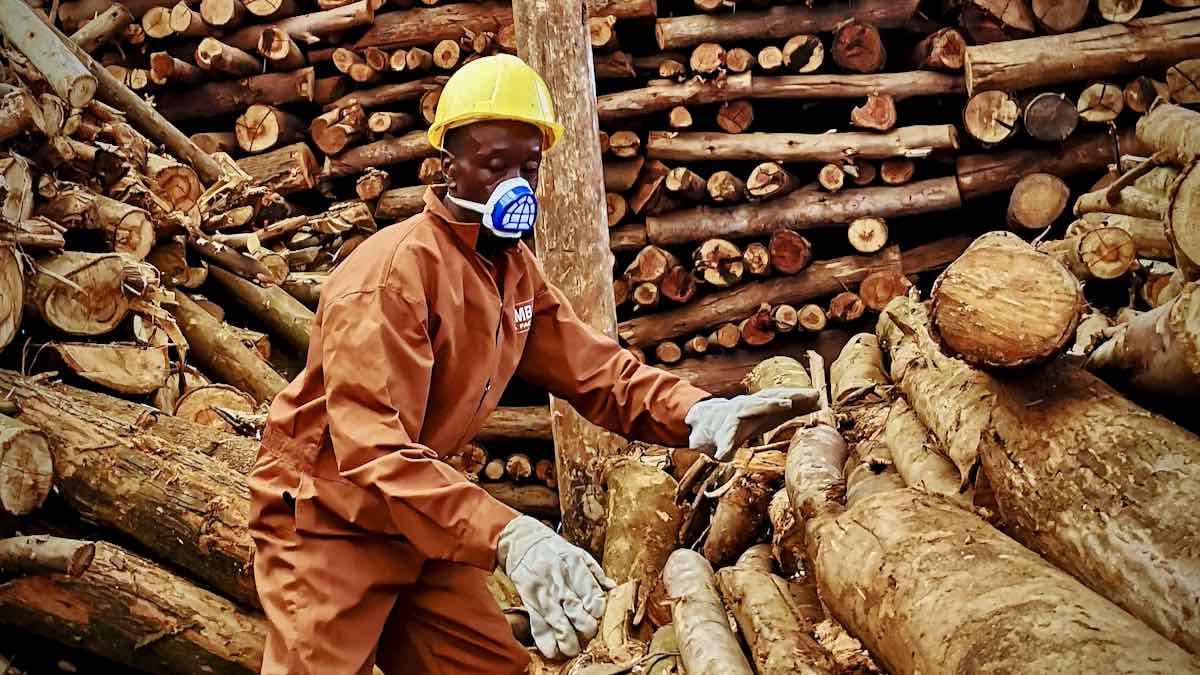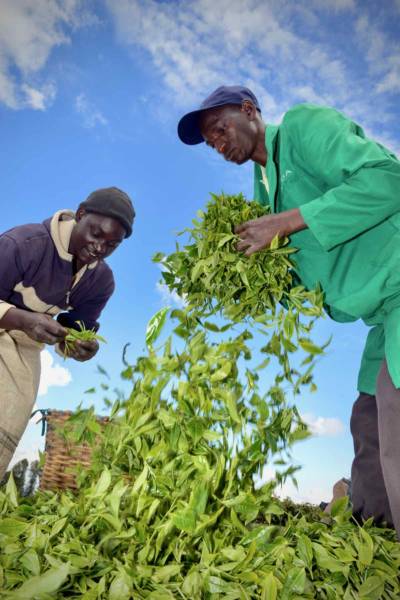Towards Carbon Neutral Tea
Lessons learned from Asia and Africa

Fuelwood supply ⎮ © GIZ / Böthling
Getting the tea industry future-ready
The Powering Agriculture programme of GIZ and the Ethical Tea Partnership have been partnering for over six years to bring about change in the tea sector. Working in Sri Lanka, Indonesia and Kenya, we have been supporting the tea industry to become low carbon, energy-efficient, fair and inclusive.
About the partnership of GIZ and the Ethical Tea Partnership
Interventions include:
- Building internal capacity and conducting energy audits across Africa and Asia
- Forming and training energy management teams in tea factories
- Developing best practice guidance
- Facilitating behaviour change of factory workers and managers
- Trialing new technology
- Improving data monitoring and using satellites, drones and weather stations to gather precise information on landscape management such as the efficient application of fertilizer.
Learnings from Asia are equally valuable for the African-based tea industry. GIZ and ETP are collaborating to foster more exchange among the tea-growing countries.

Tea sorting ⎮ GIZ / Böthling
Tea sector in Sri Lanka, Kenya, and Indonesia
Tea is the second most consumed beverage in the world, after water only, and it is one of the most important crops for Sri Lanka, Kenya, and Indonesia. Sri Lanka is the third-largest global exporter of tea comprising approximately 11% of the export market. Domestically, the Sri Lanka tea sector is valued at $1 billion per annum. Kenya is the world’s top exporter of black tea. Tea contributes 4% of the country’s GDP and 26% of the country’s export earnings. The UN Food and Agricultural Organization (FAO) estimates that 10% of the Kenyan population depend on tea, with around 560,000 small scale farmers producing 60% of the tea. Indonesia is the seventh-largest tea exporter in terms of weight. Approximately 70% of the production is in West Java and smallholders cultivate nearly 50% of the land.
Energy efficiency in the tea sector
Climate change affects the tea production process and increases the vulnerability of the actors in the industry. Improving the energy efficiency within the sector not only mitigates climate change but can also significantly reduce the operating costs of production. In countries like Kenya, where farmers are part owners of the tea factories, this can generate additional income and reduces deforestation.
In Kenya, the early movers (the first eleven tea factories that carried out energy audits, training and implementation together with GIZ and ETP) were able to reduce electricity use by 11 % and firewood consumption by 10%. This equates to an annual energy cost saving of EUR 60 000 per factory.
Greenhouse Gas Emissions
Findings from Ethical Tea Partnership and GIZ’s past studies have shown that the largest quantities of GHG emissions in the tea production process come from the fertilizers used to grow the tea, the biomass used to dry the tea (often unsustainably sourced fuelwood) and the energy used in the factories. In Sri Lanka for example, biogenic emissions accounted for 64% of total GHG emissions (of a sample of 29 estates in 2019). The second most significant source of emissions arises from fertilizer use, which represents 15% of total emissions in the Sri Lankan tea sector.
Lessons learned
- Factories have been incentivized by the potential of a quick return on investment by improving energy efficiency.
- It is critical to engage all stages of management in efficiency training (not just technicians) as those higher up the chain will be needed to release funds for investment. In Kenya, this was achieved through inviting senior management on exchange trips to observe best practices in energy efficiency. In Sri Lanka and Indonesia, meetings were held with company CEOs at the beginning of project engagement.
- Focusing on methods to facilitate behaviour change is critical to implementing efficiency measures beyond machinery upgrades. In Kenya, we rolled out a training programme for factory workers and managers to establish the significance of changes in operations and machinery
- There is a strong need to empower factory staff to implement an energy data capture system to easily understand and effectively use the data to support energy efficiency.
- Exchange trips for tea factory staff (both in-country and internationally) provide opportunities to learn about new technology and approaches to shifting towards a carbon-neutral tea sector.
- Modern technology has helped participants to make informed decisions.
- It has been helpful to use a landscape-level lens to understand the integration between the challenges and solutions.
- Working with state and private actors and focusing on a sectoral wide push to improve energy efficiency and a move towards carbon neutrality can be a strong catalyst for change. In Sri Lanka, we are working closely with the Colombo Tea Traders Association (the body representing producers, buyers and exporters) on a collective process to explore the development of a 10-year industry plan towards carbon neutrality & industry sustainability.
- A strong energy conservation framework at the national level is important to incentivize and promote certification and the use of energy auditors.
- National energy efficiency competitions can be helpful. This was trialed in Kenya, where factories submitted their annual progress on sustainable energy management and the highest achieving factories were celebrated at an awards ceremony.
Additional information
https://energypedia.info/wiki/Energy_Efficiency_Potentials_in_the_Kenyan_Tea_Sector
Contact
- Rachel Cracknell, Senior Programme Manager, ETP
- Lucie Pluschke, WE4F Est Africa Hub Manager, GIZ

